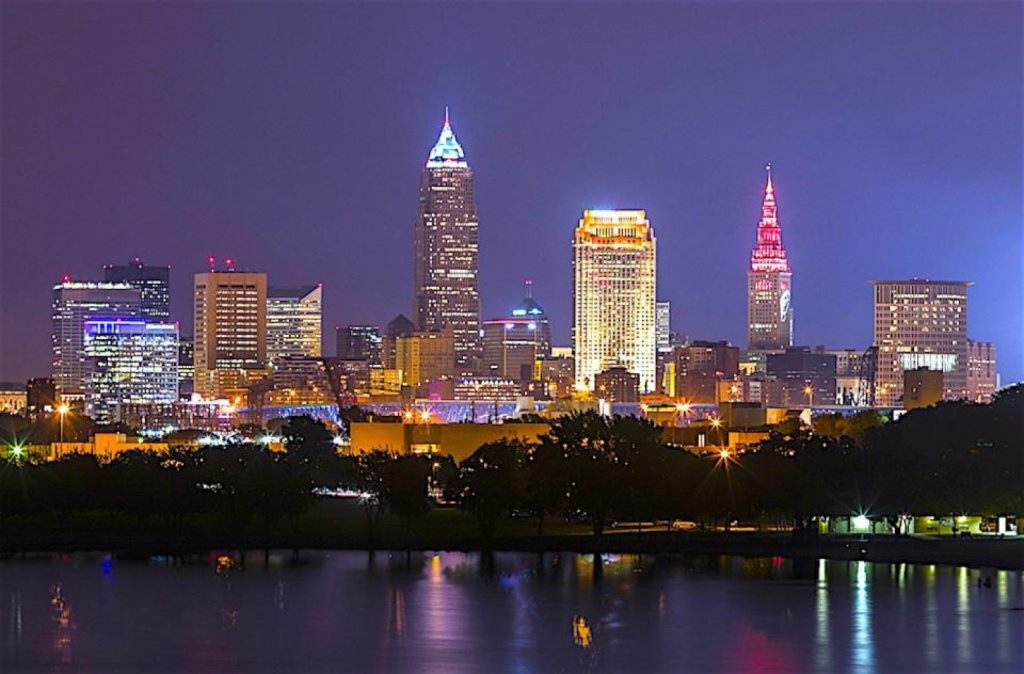Ohio’s baseline economic pulse these days supports Donohue’s (and Drive Capital’s) fundamental economic premise. Consider this:
- Dayton, Ohio was the computational business epicenter of America in the 1950s and 1960s
- The first text message and email were sent from Columbus, Ohio (thanks CompuServe)
- Total venture capital investments in Ohio start-ups hit $373m in 2015, a 16% increase over 2014
- Though total U.S. venture capital availability decreased by 9% in 2015, venture capital availability in Ohio increased by 22% to $296 million
- 80% of the National Venture Capital Association membership is located in Boston and Silicon Valley. But Columbus, Ohio has the largest angel investment fund in the U.S.
- Ohio had an aggregate exit value of $1 billion in acquisitions in 2015.
The Midwest’s overall business resurgence is also getting a big boost from a bourgeoning urban culture that is creating a Millennial gravitational pull away from traditional start-up hubs like California, Boston, and New York. Ohio alone is home to seven major league sports teams, and many iconic museums and institutions like the Rock and Roll Hall of Fame and The Cleveland Clinic. Ohio’s resurgent culinary culture, thanks to local celebrity chefs like Jonathan Sawyer who have planted their roots back home, has also put the state in the ranks of America’s leading foodie hotspots.
More broadly, Forbes recently ranked Cleveland as one of “The 25 cities where your paycheck will go the furthest”, and Cincinnati 5th as the most affordable metropolitan area as well as the 9th best city in America for raising a family. Columbus has also recently been tagged as the third “fashion capital” of the U.S. after New York City and Los Angeles.
Add to these current statistics the fact that Ohio has an estimated more than $1 billion in unmet venture capital investment, and it’s makes you wonder why more seasoned venture capital and investment firms on America’s coasts aren’t paying more attention to Drive Capital’s “Go Midwest” lead.
“Most of the people I know in the VC business in Silicon Valley have gone from the ‘You’re crazy’ to the ‘I’m intrigued’ stage”, says Kvamme. “But the hardest thing I still have to do is just convince people to get on a plane. A lot of people still think the river is on fire in Cleveland. And even the people running for President still call us the Rust Belt on the stump. Nothing could be farther from the truth.”
Kvamme and his Drive Capital co-founder, Chris Olsen, were groomed to have good start-up instincts. But they’re also all about big data. At Sequoia, they learned that macro- and microeconomic information can tell you as much about the potential of a new company as a hundred interviews with its founders. What they’ve discovered between the Appalachians and the Rockies a thousand miles from the country’s coasts is the next American entrepreneurial frontier.
“Mark and I were both trained by the very best in our business (at Sequoia) to build strong, well-evidenced theses,” Olsen recently wrote in an op-ed piece for Venture Beat. “Surprisingly, every piece of macroeconomic data suggested that the raw ingredients for bold, ambitious new companies were more plentiful (in the Midwest) than in Silicon Valley.”
Kvamme’s and Olsen’s conventional-wisdom breaking thesis was based on a few simple facts. California is the eighth largest economy in the world. America’s Midwestern states comprise the fifth. The Midwest’s collective economy is also bigger than Brazil’s, Russia’s, or India’s, and graduates more computer science degrees than any other region in the world.
“It is only a matter of time until Midwest cities surpass recent emerging venture cities like Shanghai, Stockholm, and Mumbai to rival Silicon Valley,” wrote Olsen. “There are more entrepreneurs building billion-dollar companies in the Midwest today than in the past 50 years combined. Think about that. These entrepreneurs have together created an engine of growth that will shape and reshape the U.S. economy for years to come.”
All of which means Ohio and the Midwest are resurgently on the rise right back to where they’ve always belonged. In tandem with the state’s reputation as the Presidential election bellweather, Ohio has historically been recognized as one of America’s best places to test drive new products and the proving ground for entrepreneurs to establish validation of concept. Ohio just needed more people like Kvamme and Olsen to pay attention again.
“The venture capital community here finally got together a few years ago and said we need a unified voice to the country,” says VentureOhio CEO Donohue. “We need to advocate for entrepreneurs and investors, not just as a place to start a business but as a place to work, live, and play. We need to increase the amount of investment capital available to Ohio-based companies. And we need to advance entrepreneurship in Ohio as a connected business community. The momentum Ohio and the Midwest have right now is so strong. And we need to capitalize on that. I’m not sure if that’s got anything to do with LeBron James . . . But everyone in Ohio seems to be winning right now.”
First and foremost on that winning list from a balance sheet standpoint is Drive Capital. Because they took the bold risk to make the first big bet on Ohio and the Midwest’s new economic future.
“Sequoia is truly a world class place,” says Olsen ”And if you are a founder in any of their focus geographies, you are an idiot if you don’t seek them out to be your investor. But we also believe that if you are an entrepreneur with a fledgling company in 2016, you are an idiot if you don’t consider building it in the Midwest.”
Having raised the second largest venture capital ever in the U.S. Olsen, Kvamme, Drive Capital, and the dozens of other VC firms betting that Ohio and the Midwest is the next Silicon Valley are clearly putting their money where their mouths are.


